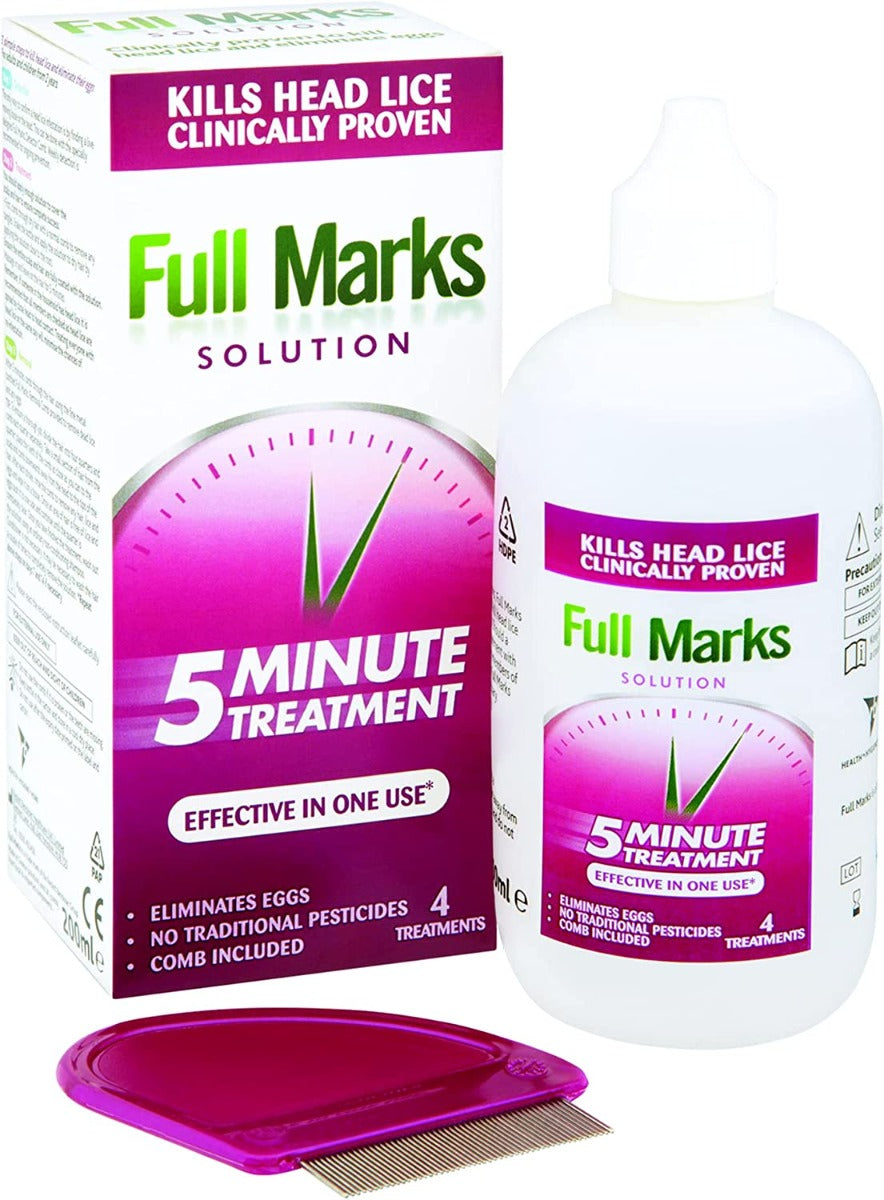Full Marks Lice Solution 200mL
Full Marks Lice Solution 200mL
Couldn't load pickup availability
Eliminate eggs. No traditional pesticides.Quick & easy treatment. Head lice solution & comb included. Low odour. What is in our head lice solution? It contains Cyclomethicone and Isopropyl Myristate which are not harmful to the skin or eyes. This patented formulation is dermatologically tested. It is available in 100mL, 200mL & 300mL bottles. How does Full Marks Solution work? Full Marks Solution is a new treatment that is clinically proven to kill head lice and eliminate eggs when applied on dry hair and combed through with the comb provided. Full Marks Solution has a physical action on the lice causing them to dehydrate (lose water) and die, they can then be removed along with any eggs using the comb provided. Each treatment requires approximately 50mL of solution. As it is low odour treatment, it is more pleasant to use. It also has the added advantage of being a lot quicker than many other treatments.Facts about head lice: Head lice are small insects (about the size of a sesame seed when fully grown) that live in the hair and on the scalp of humans. They vary in colour from light brown and sometimes appear reddish after a blood meal, as they feed off the human scalp. Head lice have claws on the end of each of their six legs that enable them to cling to the hair and move about. They can only move from one head to another during close prolonged head to head contact - they cannot jump, swim or fly. Once on the head, the female louse carefully lays the fertilised eggs and glues them to the hair close to the scalp where the temperature is right! The eggs take approximately 7 - 10 days to hatch. Once hatched the abandoned egg casings remain, these are referred to as 'nits' and can be removed using a fine metal tooth comb. Head lice do not have a preference for the cleanliness of the hair they live in - an infection can happen in clean and dirty hair. You can't stop your children getting head lice, but with regular detection you can identify an infection early and treat it quickly. The best way to detect head lice is through 'detecting comb'. This should be carried out on an a routine, regular basis but also in response to any risk of infection e.g. outbreak of head lice at school etc.


